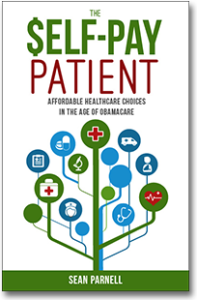The Gift of Self-Paid Care

Naturally, asking about cash discounts at doctor’s offices has taken on a new significance. It also resulted in a 30 percent discount off a pre-Thanksgiving visit to my urologist, along with no paperwork or waiting to process an invoice.
Such experiences lead me to offer this thought during the season of sugar plum fairies and magical presents appearing under the tree—no bigger fantasy exists than thinking a giant bureaucracy is going to simplify health treatment.
The Low-Cost MRI
I have relied on health-cost sharing plans rather than traditional insurance for 20 years. And, I was always shocked by the level of premiums other self-employed people paid for their coverage.
When one consultant told me he paid triple what I did, I replied, “If someone told me I had to pay what you do, I would just take my chances.”
However, I didn’t have a grasp of how much waste, inefficiency and cost are built into “the system” until I heard recently about a friend’s experience.
At the time, we were both part of the same plan. We both had increased our annual deductible to $2,500 to avoid further rate increases. Needing an MRI, he called an outpatient center to ask what one would cost: about $2,700.
“What if I paid cash?” he asked and was stunned by the difference—just $348 for self-pay. Naturally, to avoid forking out $2,500, he chose the latter, even though he wouldn’t gain credit towards his annual deductible.
Negotiating Medical Expenses

So did a book I ordered after joining the new plan that is a hybrid of self-pay and catastrophic coverage. I read about The Self-Pay Patient by Sean Parnell in the organization’s newsletter.
Subtitled “Affordable Healthcare Choices in the Age of Obamacare,” it contains a wealth of background information, web site links, and other material.
It’s all intended to help avoid bureaucratic solutions to health treatments—like medical tourism, the practice of traveling to other states or even nations for more reasonably-priced surgery.
Grassroots Solutions
I quickly discovered that many of the options outlined in Parnell’s book are more readily available to residents of major metropolitan areas; that leaves me out in the near-term.
Still, the development of networks advocating self-pay medical care, and doctors who choose to operate on cash instead of saddling themselves with an inane and inefficient bureaucracy, is growing.
Thus, I foresee this grassroots movement spreading to the hinterlands as well. It already has at one level. Saddled with a huge deductible for their insurance plan, our oldest daughter operates largely on cash discounts for her family’s doctor visits.
In a day of annual deductibles running as high as $6,000 or more, choosing ways around the traditional health insurance paperwork blizzard makes an increasing amount of sense. Go ahead and give yourself an early Christmas present: Decide to opt for a healthier way of paying doctor bills.



One Response
Extremely enlightening post, Ken. Thanks for sharing your experience and the book recommendation.
Comments are closed.